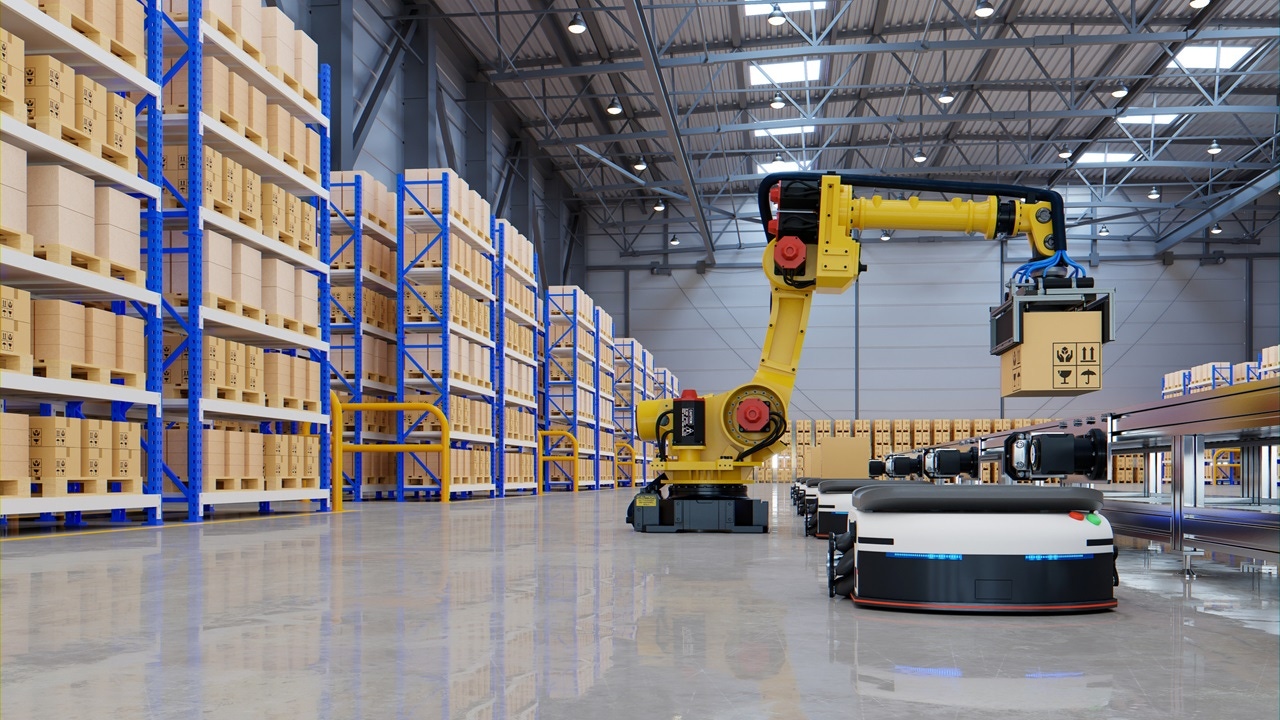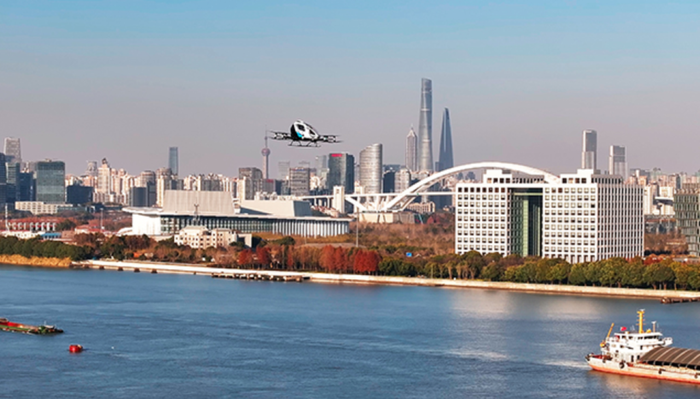Using Smart Robots to Automate Material Handling in the Supply ChainUsing Smart Robots to Automate Material Handling in the Supply Chain
Maximizing robot efficiency and enabling complex task orchestration can deliver significant productivity gains

The use of robots for material handling is not new. However, a new generation of smart robots is now being deployed at scale. Their enhanced intelligence sets today's robots apart, augmenting human capabilities by eliminating repetitive tasks and improving worker safety.
Shifting consumer demands and global demographic changes have driven many businesses to quickly adopt robotics and automation for their supply chain and logistics operations. Companies like Amazon, which uses over 750,000 robots to fulfill orders, highlight the urgency for others to embrace automation innovations or risk falling behind. These trends, already in motion, were further accelerated by the global pandemic, which disrupted supply chains and intensified operational challenges.
Robotics in logistics promises operational efficiencies that can significantly reduce delivery times, enhancing customer satisfaction and loyalty. One estimate from Amazon reveals customers can reduce delivery time by as much as 25% by embracing the use of smart robots. Early adopters are now automating multiple processes within their warehouses, aiming to enhance worker efficiency. For companies that have yet to convert from labor-intensive manual processes, numerous automation systems and robots are available to help them catch up, but the clock is ticking.
Where Robots are Working in the Supply Chain
Understanding the scope and impact of robotics in the supply chain can be daunting for executives. Robots now impact various stages of the supply chain, from manufacturing to last-mile delivery. As robotics hardware matures and becomes more affordable, the scope of automation continues to expand. This article focuses on robotics solutions for material handling within warehouses and distribution centers.
Receiving. In warehouse operations, receiving involves accepting and initially handling incoming inventory. Automated guided vehicles (AGVs) and autonomous forklifts are now used to move pallets from the receiving dock to storage areas. Companies like OTTO by Rockwell Automation, Balyo and Dematic offer a range of such vehicles. Depalletizer robots, which unload goods from pallets, are also becoming more common, with companies like ABB and leading the way. Emerging solutions for trailer unloading can further automate some time-consuming tasks.
Storage. Warehouse storage solutions include automated storage and retrieval systems (ASRS), which integrate shelving and retrieval components. AutoStore and Attabotics offer systems where robotic shuttles retrieve items from vertical storage towers. Instock’s creative solution uses magnetic AMRs traveling on floors, walls and the ceiling within the shelves to retrieve items, demonstrating the wide variety of approaches in storage automation.
Picking and Staging. The process of picking and staging orders has seen significant automation advancements. Goods-to-person systems involve robots bringing shelves with ordered items to human workers. Autonomous mobile robots (AMRs) like those from Locus Robotics and Zebra, assist workers by collecting items and transporting orders through the warehouse. Robotic arm-picking systems from companies like Berkshire Grey further streamline the process. Amazon recently acquired the founding team at Covariant to advance its own technology in this area.
Packing and Shipping. Automation in packing and shipping is also evolving. While humans still excel at packing, newer systems use computer vision to optimize box size and labeling. Once packed, automated systems assist with loading items onto trucks.
Multi-Vendor Systems. While companies start by automating single tasks, larger and more sophisticated organizations are deploying multi-vendor robot fleets, integrating various robotic systems and OEMs. Besides material handling, warehouses and DCs may deploy autonomous cleaning robots and inventory-scanning robots, whether ground-based or airborne drones. However, the challenge of integrating different systems remains, due to incompatible software and siloed management.
Overcoming Challenges in Optimizing and Orchestrating Robot Operations
While the adoption of robotics in the supply chain offers numerous benefits, it also presents significant challenges.
Initial Investment and Implementation Costs. The upfront expenses for purchasing, installing and integrating robotic solutions can be substantial, particularly for smaller businesses. This high initial cost can be a significant barrier to entry for many companies, potentially limiting the widespread adoption of these technologies. These costs of hardware, however, are becoming more reasonable. New software tools on the market that can maximize utilization and efficiency, helping drive a positive ROI.
Technical Complexity and Integration Issues. Integrating robots from different vendors, each with its own proprietary software and communication protocols, can lead to compatibility issues and operational silos. This complexity often requires long and costly custom integration work. Modern middleware solutions dramatically reduce the time and cost of integrations leveraging data and sophisticated algorithms.
Need for Specialized Skills and Training. The introduction of advanced robotic systems necessitates a workforce with specialized technical skills. Companies often need to invest heavily in training existing staff or hiring new, technically proficient employees to operate and maintain these systems effectively. Investing in intuitive software solutions designed for operations teams rather than robotics engineers can help overcome these challenges.
Balancing Human and Robotic Tasks. While robots excel at repetitive tasks, they still struggle with jobs requiring complex decision-making in uncontrolled environments. Finding the right balance between human workers and robotic systems is crucial for optimal efficiency. Modern software combines the strengths of people, robots and AI without requiring on-site presence.
Change Management and Employee Concerns. The introduction of robots into the workplace can create anxiety among employees who fear job displacement. This necessitates careful change management strategies to address concerns, retrain staff for new roles and maintain workforce morale during the transition. Positioning workers as “robot bosses” can help.
Cybersecurity Considerations. As robotic systems become more prevalent and interconnected, they also become potential targets for cyberattacks. Protecting these systems from breaches or disruptions requires ongoing investment in robust security measures, adding another layer of complexity and cost to robotic implementations. Leveraging modern practices such as DevSecOps and end-to-end encryption helps create resilience.
Despite these challenges, the potential benefits of robotics in the supply chain continue to drive innovation and adoption, pushing companies to find creative solutions to these obstacles. Successful implementation often requires a strategic, long-term approach that carefully considers and addresses each of these challenges.
Robot operations (RobOps) software addresses the complexities of managing robot fleets by providing real-time operational data and advanced optimization tools. By maximizing robot efficiency and enabling complex task orchestration, companies can achieve significant productivity gains and a faster return on investment.
Effective orchestration of robotic and human workers is crucial. Systems that anticipate and avoid conflicts ensure harmony and operational efficiency. Investing in these technologies boosts productivity and provides a competitive edge by managing labor costs and enhancing supply chain resilience.
About the Author
You May Also Like








